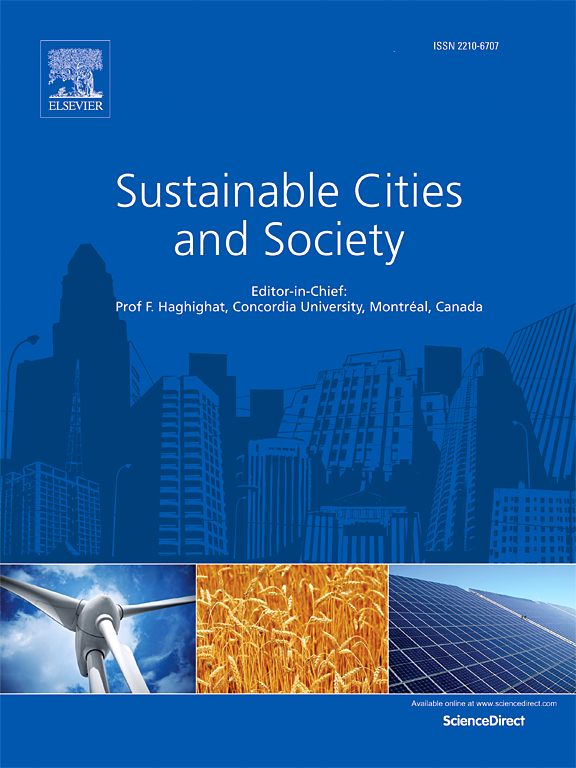Risk of mortality and disease attributable to the heat stress index and its variability during heat waves: An observational study on the city of Madrid
IF 10.5
1区 工程技术
Q1 CONSTRUCTION & BUILDING TECHNOLOGY
引用次数: 0
Abstract
In recent years, global ambient temperatures have reached alarming levels, mainly due to global warming caused by climate change, pollution, and significant population growth. High temperatures have been linked to increased mortality and a higher risk of contracting various diseases, resulting in substantial healthcare costs for many governments and citizens who are unable to cope. As a result, it is critical to implement policies to mitigate these effects and improve people's lives. This research addresses the impact of high temperatures on human health, focusing on the relationship between urban morphological characteristics (Proportion of vegetation (VP) and Urban Index (UI), Heat Stress Index (HSI) and the risk of different cancers (prostate, breast, stomach, lung and colorectal) and diseases (dementia, stroke, suicides and chronic obstructive pulmonary disease (COPD)) in the different Local Climate Zones (LCZ) of Madrid, using Landsat 8 and 9 images and the UrbClim climate model. The main findings show that compact or high-density land cover zones exhibit a higher risk of contracting the examined diseases than open or low-density regions. This circumstance is motivated by the fact that such areas have less vegetation cover and experience higher rates of heat stress. Findings indicated that the lack of vegetation in compact and high-density areas reduces the ability to minimize extreme temperatures and heat, which is associated with a variety of health problems. This study provides valuable knowledge about the relationship between vegetation, HSI, and health in the different LCZs, providing a solid basis for sustainable urban planning strategies that improve the standard of living of the inhabitants not only of the city of Madrid but of the rest of the cities on the planet.
求助全文
约1分钟内获得全文
求助全文
来源期刊

Sustainable Cities and Society
Social Sciences-Geography, Planning and Development
CiteScore
22.00
自引率
13.70%
发文量
810
审稿时长
27 days
期刊介绍:
Sustainable Cities and Society (SCS) is an international journal that focuses on fundamental and applied research to promote environmentally sustainable and socially resilient cities. The journal welcomes cross-cutting, multi-disciplinary research in various areas, including:
1. Smart cities and resilient environments;
2. Alternative/clean energy sources, energy distribution, distributed energy generation, and energy demand reduction/management;
3. Monitoring and improving air quality in built environment and cities (e.g., healthy built environment and air quality management);
4. Energy efficient, low/zero carbon, and green buildings/communities;
5. Climate change mitigation and adaptation in urban environments;
6. Green infrastructure and BMPs;
7. Environmental Footprint accounting and management;
8. Urban agriculture and forestry;
9. ICT, smart grid and intelligent infrastructure;
10. Urban design/planning, regulations, legislation, certification, economics, and policy;
11. Social aspects, impacts and resiliency of cities;
12. Behavior monitoring, analysis and change within urban communities;
13. Health monitoring and improvement;
14. Nexus issues related to sustainable cities and societies;
15. Smart city governance;
16. Decision Support Systems for trade-off and uncertainty analysis for improved management of cities and society;
17. Big data, machine learning, and artificial intelligence applications and case studies;
18. Critical infrastructure protection, including security, privacy, forensics, and reliability issues of cyber-physical systems.
19. Water footprint reduction and urban water distribution, harvesting, treatment, reuse and management;
20. Waste reduction and recycling;
21. Wastewater collection, treatment and recycling;
22. Smart, clean and healthy transportation systems and infrastructure;
 求助内容:
求助内容: 应助结果提醒方式:
应助结果提醒方式:


